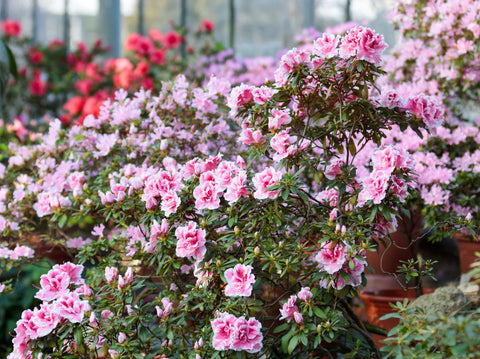Hydrangeas are beloved for their lush blooms and vibrant colors, but they can struggle in the intense heat of summer. To keep your hydrangeas looking their best, it’s crucial to provide the right care during the hottest months. Here’s a summer care guide covering watering schedules, shade solutions, sunburn prevention, pruning tips, and fertilizing advice. We’ll also touch on how care tips can vary by location.
Watering Schedules for Hydrangeas
Hydration is Key: Hydrangeas need consistent moisture to thrive, especially during summer heat. Here’s how to keep them adequately watered:
- Morning Watering: Water hydrangeas early in the morning to allow them to absorb moisture before the sun intensifies. This helps reduce evaporation and ensures the roots stay hydrated.
- Deep Watering: Water deeply, ensuring the soil is moist to a depth of at least 6 inches. This encourages deep root growth and improves drought resistance.
- Frequency: In hot weather, water your hydrangeas 3-4 times a week. Adjust based on rainfall and soil moisture levels. Mulching around the base can help retain soil moisture.
- Newly Planted Hydrangeas: During the hot summer months, it's crucial to water your hydrangeas daily. These plants quickly absorb moisture and require additional hydration and care to establish strong roots before winter.
Shade Solutions for Hydrangeas
Protect from Direct Sun: While hydrangeas love sunlight, too much direct sun can cause leaf scorch and stress. Here are some shade solutions:
- Partial Shade: Plant hydrangeas where they receive morning sun and afternoon shade. This balance helps them thrive without the intense afternoon heat.
- Temporary Shade Cloth: During extreme heatwaves, use a shade cloth to protect your hydrangeas from the sun’s harshest rays. This temporary solution can prevent leaf scorch and stress.
- Strategic Planting: Plant hydrangeas near taller shrubs or trees that can provide natural shade during the hottest part of the day.
Preventing Sunburn in Hydrangeas
Leaf Scorch Prevention: Sunburn or leaf scorch can damage your hydrangeas, but it’s preventable with these tips:
- Mulching: Apply a 2-3 inch layer of mulch around the base of the plants. This helps regulate soil temperature and retains moisture, reducing the risk of sunburn.
- Proper Watering: Consistent, deep watering helps prevent the leaves from drying out and scorching. Ensure the soil is evenly moist but not waterlogged.
- Monitor and Adjust: Keep an eye on your hydrangeas. If you notice signs of sunburn, such as brown edges or spots, adjust your shading and watering strategies promptly.
Pruning Tips for Hydrangeas
Pruning for Health: Pruning helps maintain the shape and health of your hydrangeas. Here’s how to do it right:
- Timing: Prune hydrangeas after they finish blooming, typically in late summer or early fall. This timing allows the plant to recover before the next growing season.
- Technique: Remove dead or damaged stems first. Then, trim back about a third of the older stems to encourage new growth. For hydrangeas that bloom on old wood, be cautious not to cut back too much.
- Tools: Use clean, sharp pruning shears to make clean cuts and reduce the risk of disease.
Fertilizing Tips for Hydrangeas
Nourishing Your Hydrangeas: Proper fertilization supports healthy growth and vibrant blooms. Here’s what you need to know:
- Type of Fertilizer: Use a balanced, slow-release fertilizer, such as a 10-10-10 (N-P-K) mix. This provides essential nutrients without overwhelming the plant.
- Timing: Fertilize in early spring as new growth begins and again in early summer. Avoid fertilizing late in the season to prevent encouraging new growth that might not harden before winter.
- Application: Follow the manufacturer’s instructions for application rates. Spread the fertilizer evenly around the base of the plant, avoiding direct contact with the stems.
Regional Care Tips
Tailoring Care to Your Location: Hydrangea care can vary based on your climate and region. Here are some regional considerations:
- Southern Regions: In hotter climates, provide more frequent watering and additional shade. Consider heat-tolerant varieties like ‘Endless Summer’ that can handle higher temperatures.
- Northern Regions: In cooler climates, ensure your hydrangeas receive enough sunlight. Morning sun and afternoon shade work well. Winter protection might be necessary for some varieties.
- Coastal Areas: Coastal regions with salty air and high humidity require well-draining soil to prevent root rot. Rinse leaves with fresh water if salt buildup is a concern.
Wrapping it Up: How to Care for Hydrangeas in the Summer
Keeping hydrangeas happy in the summer heat involves a combination of proper watering, shading, sunburn prevention, pruning, and fertilizing. By understanding the needs of your hydrangeas and adjusting your care routine based on your region, you can enjoy their beautiful blooms all season long.
Ready to enhance your garden with happy hydrangeas? Explore our selection of hydrangeas and take advantage of our expert care tips for vibrant, healthy plants. Enjoy 15% off your first purchase and keep your garden flourishing all summer!


